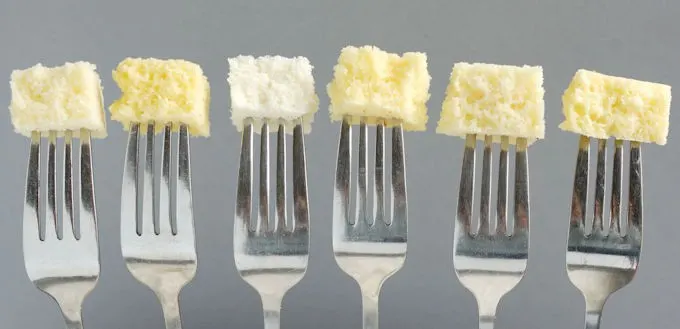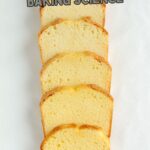🥚 Eggs in Baking
It’s hard to overstate how essential eggs are in baking. They bind, leaven, emulsify, and add color, moisture, and flavor to everything from custards and cakes to meringues and macarons.
Beyond their versatility, eggs are pure baking chemistry: their proteins provide structure, their fats add richness, and their ability to foam or emulsify makes them indispensable to both pastry and bread formulas.
In fact, the egg holds such culinary importance it is said that each of the 100 folds of a chef’s toque represents one way the chef can cook an egg.

Table of contents
Egg Science
An egg’s culinary superpower lies in it’s proteins.
A whole egg is mostly water, with protein molecules suspended throughout. When raw, those proteins are tightly coiled — picture knotted rubber bands floating in liquid.
When eggs are heated, salted, whipped, or acidified, those coils unwind and link up to form new bonds, creating a three-dimensional network that traps water. Now imagine those knotted up rubber bands unwinding and grabbing onto each other to form a solid mass. That’s what turns liquid egg into a solid custard or firm sponge cake.
Baking Sense Tip
The same coagulation that sets a custard also helps cake batters set as they bake — providing structure once the leavening gases expand.
The difference between Egg Whites & Egg Yolks
Egg Yolks
Yolks make up about a third of a whole egg’s weight and contain most of its calories, fat, and flavor. They also contain lecithin, a natural emulsifier that helps water and fat blend smoothly — the key to velvety custards and stable buttercreams.
Yolks enrich batters and improve moisture retention, creating tender, flavorful baked goods. They also act as an emulsifier, keeping ingredients like butter and milk evenly dispersed.
Egg Whites
Whites make up about two-thirds of an egg’s weight and are about 90% water and 10% protein. They don’t add richness but provide tremendous structure and lift when whipped or baked.
Whipped whites trap air, which expands in the oven — creating volume in soufflés, sponge cakes, and angel food cakes.
👉 Learn more about how fats affect structure in Fats in Baking and how proteins interact with gluten in Flour in Baking.
How long do eggs stay fresh?
Eggs naturally keep well because their shells protect them from bacteria and moisture loss. Refrigerated, they remain safe to use for several weeks, though the internal chemistry slowly changes:
- As eggs age, the white becomes thinner and more alkaline.
- Older whites whip faster, but fresh whites create a more stable foam (better for sponge cakes).
- The yolk membrane weakens over time, making separation more difficult.
- Moisture loss enlarges the internal air cell, which is why older eggs float in water.
🧪 Quick freshness test:
Place the egg in a bowl of water:
- Sinks and lies flat: very fresh.
- Tilts upward: older but fine to use.
- Floats: time to discard.
How to Store Eggs
Eggs deteriorate about four times faster at room temperature than when refrigerated.
- Store eggs in an airtight container in the refrigerator.
- Keep them away from strong-smelling foods (shells are porous).
- Once cracked, use immediately or freeze (see below).
Can raw eggs be frozen?
Yes, with care.
- Whites: freeze in an airtight container for up to 3 months.
- Yolks: mix with salt or sugar before freezing to prevent gelling.
- Add ½ teaspoon salt or 1½ teaspoons sugar per cup of yolks.
- Whole eggs: lightly beat, then mix in ¼ teaspoon salt or ¾ teaspoon sugar per cup before freezing.
Label whether you used salt or sugar so you can match to the recipe type later.
📘 Continue Learning
This page is part of my Baking Ingredient Science series, where I explain how each ingredient affects texture, flavor, and structure in baking.
Explore more ingredient guides:
- Flour in Baking – structure and gluten formation
- Sugar in Baking – sweetness, tenderness, and moisture
- Fats in Baking – richness and flakiness
- Salt in Baking – balance and control
- Chemical Leavening in Baking – rise and aerate
- Yeast in Baking – fermentation and flavor
- Chocolate in Baking – flavor and structure

